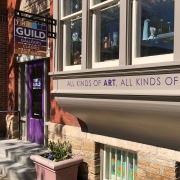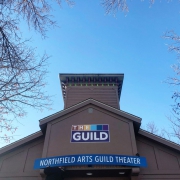
Watch a recording of the Virtual Reception that was held on August 6, 2020 to celebrate the artists. See a slideshow of artwork and hear remarks from the featured artists followed by an artist Q & A portion.
Centered Mindfulness features installation works by six regional artists Marilyn Larson, Tim Lloyd, John Saurer, Jan Shoger, Elizabeth Simonson and Michon Weeks. Each artist has developed a specific visual language that aims to shift viewers’ perspective toward a more meditative view of the world, either through repetitive forms, mathematical theories, grid systems or circular structures.
SEE EXHIBITION VIDEOS AND PHOTOS
FEATURED ARTISTS:
Marilyn Larson
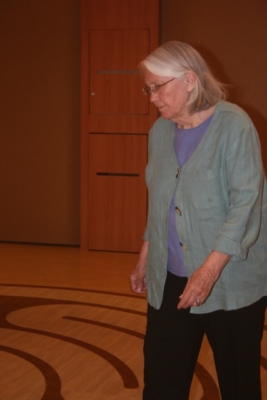
 Marilyn Larson is a Minneapolis-based artist, ceremonialist, and labyrinth maker. Since 1996 she has been building contemplative labyrinths for wall, floor and outdoors. Labyrinths have been found worldwide over the past 5,000 years. Patterns found in nature are reflected in walkable art called labyrinths. A labyrinth is an enclosed meandering path that leads into a center and out again. A sacred space is created each time we trace the form of a labyrinth with eyes, fingers, or feet. A labyrinth is also a mirror and a listening device. Intentions set upon entering the image invite response. Wherever found, labyrinths continue to offer an opportunity to experience a pace that can bring inner peace. Like the meandering movement of a river that revitalizes water, the ever-turning, rhythmical walk of a labyrinth calls forth clarity.
Marilyn Larson is a Minneapolis-based artist, ceremonialist, and labyrinth maker. Since 1996 she has been building contemplative labyrinths for wall, floor and outdoors. Labyrinths have been found worldwide over the past 5,000 years. Patterns found in nature are reflected in walkable art called labyrinths. A labyrinth is an enclosed meandering path that leads into a center and out again. A sacred space is created each time we trace the form of a labyrinth with eyes, fingers, or feet. A labyrinth is also a mirror and a listening device. Intentions set upon entering the image invite response. Wherever found, labyrinths continue to offer an opportunity to experience a pace that can bring inner peace. Like the meandering movement of a river that revitalizes water, the ever-turning, rhythmical walk of a labyrinth calls forth clarity.
Tim Lloyd
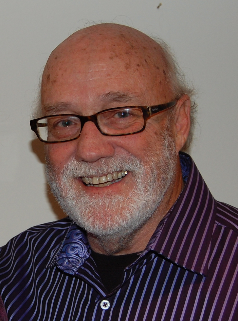
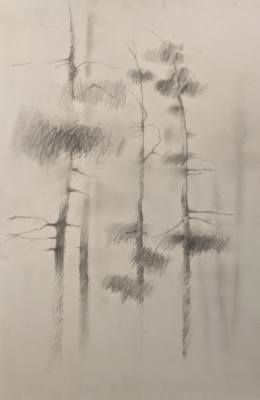 Tim Lloyd is a Northfield artist whose ideas come from nature, and whose work has always made reference to some aspect of the natural world.
Tim Lloyd is a Northfield artist whose ideas come from nature, and whose work has always made reference to some aspect of the natural world.
Boreal Studies, a series.
Drawing for me has always been a way to get into the mind of an artist. Without the intent of making a work of art the direct activity putting marks on a surface gets close to the thinking of a person. It’s something like what I like to say “picking the brain of another human”.This series of drawings of trees from an area of Minnesota’s Arrowhead gives this group of graphite drawings “ a sense of place” not only of boreal species, that of old growth White Pine, White Spruce, and Balsam Fir, but of my intent to describe the trees. I hope too that they also give a glimpse of my thought process. I love graphite as a tool for mark making, for me its’ spontaneity conveys how I’m mindful as I draw.
John Saurer
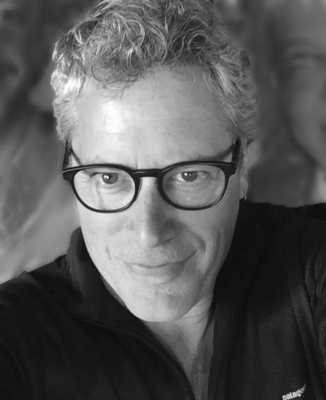
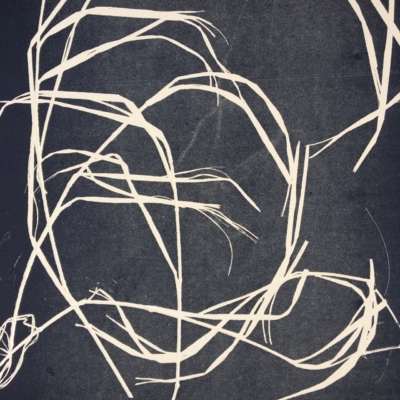 I created this monoprint series of over 100 impressions of simple objects collected at my feet, off the ground (natural and man-made, beautiful and ugly). I am intrigued by the “multiple” and the potential to construct a larger composition from a single print matrix and the “ghosts” of previous impressions as the series moves forward.
I created this monoprint series of over 100 impressions of simple objects collected at my feet, off the ground (natural and man-made, beautiful and ugly). I am intrigued by the “multiple” and the potential to construct a larger composition from a single print matrix and the “ghosts” of previous impressions as the series moves forward.
My artwork is a metaphor for order: sometimes re-expressing order found in the landscape, a mechanical process, the rhythm of form, personal relationships, and the life around me. Each work is often a collaboration of many independent parts that are crafted to come together and express a larger whole.
Jan Shoger
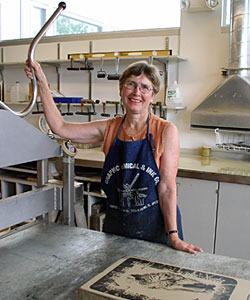
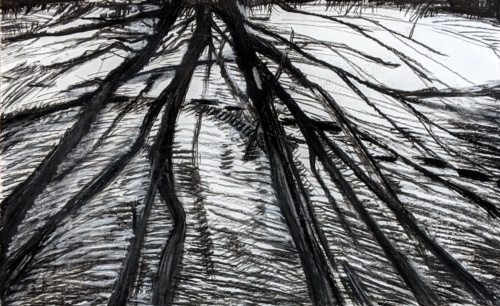 My sketchbooks are chock full of drawings of natural phenomena: logs caught in a stream, bird’s nests, cells magnified 2500 times by the scanning electron microscope, rock formations, trees hanging tenaciously to nearly bare rock, great blue herons, twisted thistles, driftwood fragments, seeds picked up on a walk, shells found at ocean’s edge, organic shadows from plants, striated stones or weathered bones.
My sketchbooks are chock full of drawings of natural phenomena: logs caught in a stream, bird’s nests, cells magnified 2500 times by the scanning electron microscope, rock formations, trees hanging tenaciously to nearly bare rock, great blue herons, twisted thistles, driftwood fragments, seeds picked up on a walk, shells found at ocean’s edge, organic shadows from plants, striated stones or weathered bones.
Shadows
Wintry, distorted shadows of tree, shrubs, grasses,
Fall across the white undulations on the hill behind the house
The mind focuses, empties of all thoughts
What I see, feel, at this moment is all that matters
Totally caught up, charcoal marks are made, responding to what I see, what I take in
Hand and eye movements merge
Spontaneous, meditative, gestures quickly mark the paper.
Elizabeth Simonson

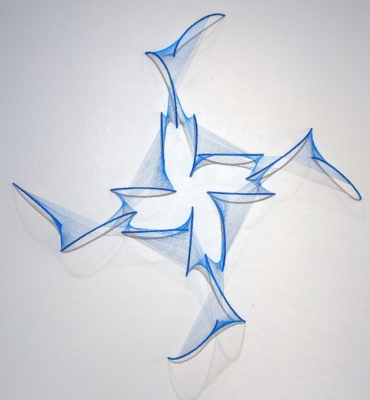 My work is structured through the creation of repetitive systems. Where better can this be found then in the building blocks of life? From simple molecular structures to complex organisms, life grows blindly, motivated by one organizing principle: creating self sustaining structures that foster survival. I feel that abstraction and the use of logic, systems and patterns is a powerful language accessible to all viewers through its association to nature. I use common everyday materials like tape, wire, beads, tiles, fishing line, office supplies or anything that comes in multiples.
My work is structured through the creation of repetitive systems. Where better can this be found then in the building blocks of life? From simple molecular structures to complex organisms, life grows blindly, motivated by one organizing principle: creating self sustaining structures that foster survival. I feel that abstraction and the use of logic, systems and patterns is a powerful language accessible to all viewers through its association to nature. I use common everyday materials like tape, wire, beads, tiles, fishing line, office supplies or anything that comes in multiples.
Before committing herself to visual art, Elizabeth was a professional dancer performing as a principal for Minnesota Dance Theatre and Feld Ballets New York. Her site-specific installations are temporal by nature, with each iteration changing slightly much like a dancer’s performance. When asked if it bothered her that her piece would be torn down, she said no—it’s just like a performance, a temporal event and like choreography it can be recreated again and again albeit with different interpretations much like a performance.
Inspired by L-systems, “Spin” is structured through the repetition of one unit defined as two archways connected by thread. Layered together in a circular pattern, the piece multiplies exponentially, creating complex geometric shapes that reference waves and suspension bridges. Like the unit, Elizabeth’s actions of threading bead after bead repeatedly, invites a state of intense mindfulness for both the artist and viewer.
Michon Weeks
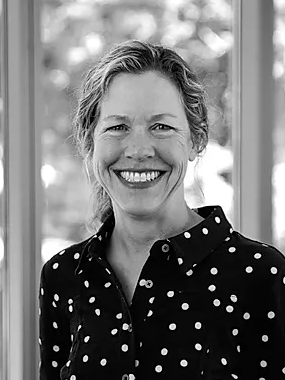
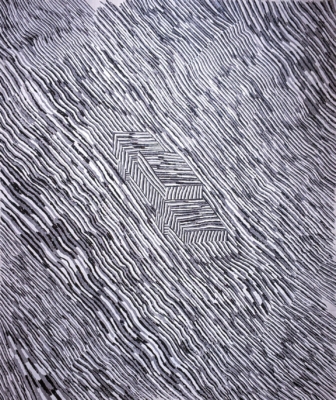 Drawings: Airplane, Boombox, Car
Drawings: Airplane, Boombox, Car
As an artist, I work to see as concretely as possible what my mind can think and imagine. Inspiration can come from anything and anywhere: things, thoughts, memories, sensations, etc. My collection of subjects for this group of drawings came from direct conversations with my choir mates at St. Peter’s in Northfield, MN. I asked my fellow singers questions about themselves. What is important to you? How do you spend your time? What are your prized possessions? Often, their answers yielded specific objects–a sewing machine, a stocking cap, an airplane, a ring, etc. I draw to see a materialized view of each object distilled through my ink, tools, hands, brain, senses, heart, and gut. I made many of the drawings within a grid of lines or dots. The grid provides a field where I can find imagery and avoid dishonest marks. Blocky-shaped objectsalong with my mistakes, edits, and dabs of unpolished doubt are unconcealed in the drawings.


